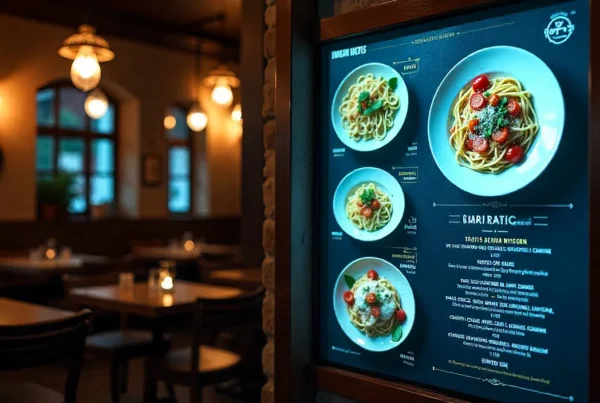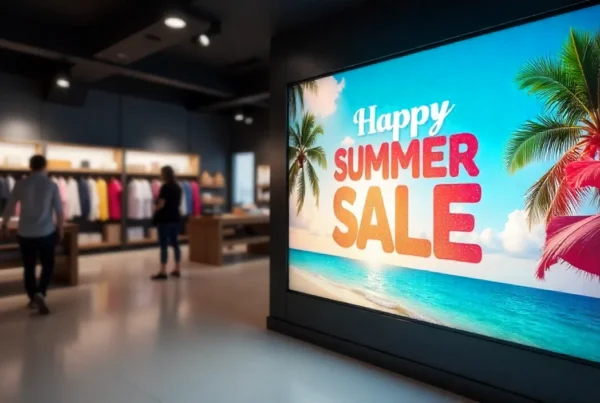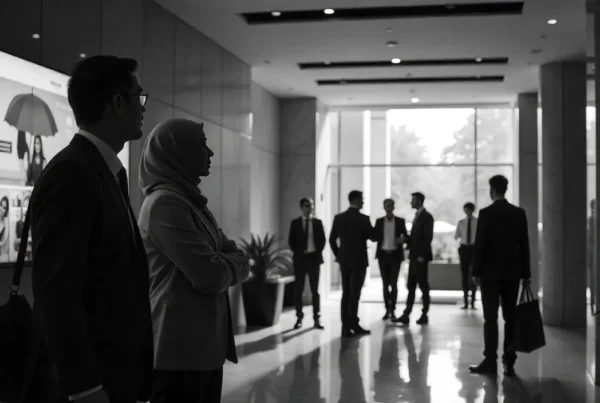The restaurant industry has revolutionized with the introduction of digital menu boards; these menu items, promotions, and important updates are displayed dynamically and in an engaging manner. To make the most of the visibility, customer experience, and readability of the digital menu board, you must choose the right size. In fact, the size and placement of the board can directly affect customer engagement and sales, so it is important for restaurant owners to choose carefully.
In this guide, we will zoom into the details regarding how to choose a perfectly sized digital menu board through the consideration of viewing distance, screen resolution, layout design, and app identity related to digital dictionary board applications in selected industries. This guide is applicable to small cafés, fast food chains, or fine dining restaurants.
 Understanding the Roleof Digital Menu Boards in Modern Restaurants
Understanding the Roleof Digital Menu Boards in Modern Restaurants
There has been a dramatic movement from static printed menus to digital menu boards in the restaurant business. Before, restaurants had printed or chalkboard menus that could be a hassle to modernize, challenging to change, and usually not visually appealing. Today, when it comes to using digital displays, there exist much more interesting, more visually captivating, and more customer-friendly alternatives.
There are several things with which digital menu boards improve customer engagement and efficiency in ordering: Restaurants can use them to promote high resolution images, animations, and videos to attract customers. That said, they also facilitate easy updates of menu items, prices, and promotions without incurring expensive reprints. Restaurants hold a significant portion of the market share of menu boards, and digital menus are common in their space.
A digital menu board of the right size will be readable as well as have an impact. Customers may also not be able to read the menu on a small screen, which is very frustrating and slows down the order processing. On the other hand, a too-big screen can swamp the room, and you cannot direct your focus to a particular item. Using a screen size that has been optimized means that the customers are able to quickly and easily find what they are looking for, and this means that they get to see a more efficient and enjoyable dining experience.
Why Size Matters for Digital Menu Boards
The size of a digital menu board is vital for the key applications’ visibility, readability, and overall effectiveness. Restaurants have to strike a balance between practicality and aesthetics to create the most optimal display that will improve customer experience and be in line with the restaurant’s interior design.
Impact of Screen Size on Visibility and Readability
A well-sized digital menu board makes sure that text, images, and pricing are easily readable from different distances. The font size can be bigger for smaller screens and accommodate less content, and vice versa for larger screens. More items can be placed on a screen without clutter. The key point here is to choose the size that makes the stuff visible, but customers won’t have to squint or feel overflowed with information.
Balancing Aesthetic Appeal and Practicality
The menu board should not dominate the restaurant’s layout or it should not seem out of place. A well-integrated digital menu board also helps to improve the overall ambiance of the restaurant and gives it a modern and professional look. Furthermore, the board needs to be placed so that it can be viewed but not block other essential elements like counters, seating areas, or promotional signage.
How Screen Size Affects Customer Decision-Making and Dwell Time
A digital menu board can affect customer behavior and order patterns due to its size and placement of it. A menu is clear and well structured, helping one to decide quickly and decreasing waiting time and overcrowding during peak hours. On the contrary, if the menu board is poorly sized or positioned, customers will be confused, and it will take longer to order and possibly even cause frustration. Selecting the correct screen size and placing it in the right place improves the customer flow and also the overall dining experience.
Key Factors to Consider When Choosing Digital Menu Board Size
While selecting which size of a digital menu board is attractive at first sight, it does so much more, such as affecting the customer experience, readability, as well as engagement. The following are the key points to consider when choosing the correct screen size for your restaurant.
Viewing Distance and Customer Experience
When choosing a digital menu board size, the viewing distance is among the most important things to consider. The customers should be able to read the menu without straining their eyes from various positions within the restaurant, and the board should be legible.
- For close viewing (3-5 feet) – Small screens between 32 to 43 inches are best for small spaces like cafés and small food stalls.
- Mid-range viewing (6 – 10′) – 43 – 55 inches is a good size for a screen for this range of viewing, allowing the viewer to see the entire screen but still be able to read the text.
- Larger displays – Over 65 inches provide room for long-range viewing (more than 10 feet), which fits for the drive-thru and food court.
Available Wall Space
You can then accommodate the maximum screen size that will fit your available wall space. Before buying, measure the installation area’s width and height and make sure your screen fits without obscuring other elements like decor, counters, or promotional signage.
- Single-screen setups – Works great in compact spaces (e.g., coffee shops or quick service restaurants).
- Multi-screen configurations – Good for the larger restaurants and food courts with different screens showing different menu categories.
Indoor vs. Outdoor Digital Menu Boards
The location where your digital menu board is placed is a major factor for screen brightness, durability, and readability.
- Indoor digital menu boards are generally shielded from direct sunlight. Therefore, they need a brightness level of 300–500 nits.
- Brightness levels for outdoor menu boards (1000+ nits) are required to offset glare and make the boards visible during daylight. To survive rain, dust, and temperature variations, they must also be weatherproof (IP-rated).
Content Layout and Design
The structure and presentation of content are based on the size of the screen. The layout is well-designed to allow customers to easily read menu items without cluttering the screen.
- Larger screens can accommodate more sections – Perfect for full-service restaurants that require to showcase different food categories, pricing, and promotional banners.
- For smaller screens, clarity should be the focus – Most suitable for cafés and fast food outlets where minimal but impactful content is needed.
Screen Resolution and Display Quality
The resulting display of a high-resolution digital menu board display ensures that it can show a clear, sharp image enhancing the menu’s appeal.
- Full HD (1080p) is the standard for most restaurants and offers clear images with readable text.
- For large displays, 4K resolution is perfect because it will ensure crisp details, especially when dealing with menus that contain high-quality food images and animations.
 Recommended Digital Menu Board Sizes for Different Restaurant Setups
Recommended Digital Menu Board Sizes for Different Restaurant Setups
The best screen size is determined by the type of restaurant and available space. Below are the recommended sizes for the different setups.
- Small Cafés and Quick-Service Restaurants
Recommended Screen Size: 32 to 43 inches
Compact digital menu boards are best for small cafés, brief service restaurants (QSRs), and so forth where space is restricted. The screens should be placed at eye level so customers can quickly scan them when placing orders at the counter.
- Best for displaying daily specials, small menus, and straightforward text-based content.
- A counter hinged version, a drive-thru window or ordering kiosk.
- Medium-sized restaurants and Casual Dining
Recommended Screen Size: 43 to 55 inches
A slightly larger screen is suitable for mid-sized restaurants, where the screen can display a number of menu items, promotions, and pricing details.
- It works best above ordering stations or on walls where customers can see what an option looks like.
- Offers a balanced layout for full-course menus, combo deals, and limited-time promotions.
- Large Restaurants and Food Courts
Recommended Screen Size: 65 inches or larger
High visibility displays are a necessity for larger restaurants to attract customer attention from various points in the establishment. Separate menu categories (e.g., beverages, entrées, desserts) may also be used with multiple digital screens.
- Such as high-traffic areas where customers need to have quick access to menu details.
- Menus are easy to read from a distance as larger displays are used.
- Outdoor Digital Menu Boards
Recommended Screen Size: 55 to 75 inches
Outdoor menu boards are used in the drive-thru’s and restaurant entrances and, therefore, require extra large, weather-resistant screens.
- Must have very high brightness levels (1000+ nits); otherwise, the device will be unreadable in sunlight and other weather conditions.
- Faster ordering times require larger text and minimal clutter.
Choosing Between Landscape vs. Portrait Orientation
Just as important as choosing the correct screen size is deciding whether you want a landscape or portrait display when selecting a digital menu board display. The way in which menu items are presented, customers interact with the display, and content is structured for readability based on the orientation.
Landscape Orientation – The Most Common Choice for Menu Boards
Why Use It? – The landscape format is the status quo for digital menu boards in restaurants because it provides more horizontal space for showing many different menu items side by side.
- Makes it possible to show multiple menu categories on one screen without cluttering it.
- Best for fast-food chains, casual dining restaurants, and multi-section menus.
- It works well with large images and promotional banners to catch customer’s eye.
When there are wide counter spaces or several cash registers, multiple landscape screens are placed next to each other for easy-to-read menu items.
Portrait Orientation – Best for Narrow Spaces and Promotions
Why Use It? – For restaurants with limited horizontal space or promoting single item promotions or special offers, digital posters are ideal for portrait format.
- Narrow walls or standalone kiosks work best for this.
- It gives a sleek and modern look, especially in high-end restaurants or bars.
- It helps in displaying the featured items (ex. “Chef’s Special of the Day” or “Limited-Time Offers’).
Also, portrait screens are used in self-service kiosks where customers can browse menus and place orders via touchscreen interactions.
Multi-Screen Configurations – When to Use Multiple Displays for Larger Menus
Using multiple screens to display the restaurant’s menu can go a long way in providing accessibility to its lengthy menu.
- Side-by-side landscape screens are used to separate menu categories (one screen for beverages, one for entrées, and one for desserts).
- Stacked portrait screens are perfect for compact spaces as they help digital menu boards keep a slim look while integrating lots of content.
- Some high-end restaurants and some food court walls use video walls to display rotating menus, seasonal items, or live updates of the kitchen, for example.
By choosing the correct orientation and number of screens, restaurants can have an engaging and visually appealing solution that helps customers make decisions and speed up the ordering process.
 How does Digital Menu Board Software affect Screen Size Selection
How does Digital Menu Board Software affect Screen Size Selection
In addition to screen size and orientation, the software running a digital menu board is equally important as far as showing and managing the content goes.
The Role of Digital Menu Board Software in Content Organization
A good digital menu board software should be capable of organizing menu items with ease, updating prices and promotional content.
- It ensures the content is formatted correctly on any screen size without any distortion.
- It helps restaurants build dynamic and interactive menus that could attract customers.
- It provides drag and drops content management to easily update the menu items on demand.
Most cloud-based digital menu board solutions take care of automatically adjusting the menu layout according to the size and orientation of the display for optimal readability.
Why Scalability and Flexible Templates Matter in Choosing Screen Dimensions
Experiences of restaurant expansion or digital signage system updating should invest their money in scalable software with flexible templates.
- Adding screens is easy and can be remotely controlled. Hence a growing restaurant will not need to reconfigure the system.
- Templates that were designed in advance can be easily switched between different screen sizes and orientations so that everything looks professional and polished.
- The same software can be used by a multi-location franchise or chain restaurant to manage the digital menu boards at various outlets.
Restaurants can take advantage of AI-driven content scheduling, which allows the updates to be automated according to the time of day (breakfast menu to lunch menu should be switched seamlessly).
The Importance of Content Scheduling and Multi-Screen Support
Multi-screen support and intelligent scheduling options should be available with a powerful digital menu board software.
- It enables restaurants to pre-schedule content updates on different menus (breakfast, lunch, dinner, etc.).
- It supports multi-screen synchronization, thus enabling the menu boards to show consistent and well-organized content on all screens.
- It decreases manual work for managers and lets them participate in customer service and restaurant operations instead of changing the menu content all the time.
Industries view digital menu boards as a tool that is only meant to assist restaurants, allowing them to achieve maximum effectiveness for their displays and help aid their customers in seeing explicit, up-to-date, and engaging menu content at all times.
Best Practices for Optimizing Digital Menu Board Displays
The digital menu board is a well-designed one that enhances customer experience and readability and boosts sales. Here are some of the practices to optimize your digital menu board to be most effective.
Better Readability Using High Contrast Colors
High-contrast color schemes are used so the text is contrasted well against the background and menu items can be read quickly with the bare glance.
- Light text on a dark background (or vice versa) improves visibility.
- Do not use low contrast color combinations (yellow text on white background) as they make it harder to read.
- Make sure that your menu is ADA compliant according to your contrast ratio for all of your customers.
Text Should Be Large, and Designs Should Not Be Cluttered
Your digital menu board should be uncluttered, organized, and without any irrelevant distractions.
- The menu should be written in large, bold fonts so that customers can read the menu items from a distance.
- Overcrowding the screen with too much text and tiny images must be avoided.
- Descriptions should be short and informative so that customers can decide quickly.
Incorporating High-Quality Images and Motion Graphics
Visual content is significant to get attention and to make the menu items more appealing.
- Make use of high-resolution images of food items for an appetizing display.
- Special offers and seasonal promotions could be featured via motion graphics and subtle motions.
- Don’t overdo the use of animations, as they can be highly engaging. However, an excessive amount of movement can be off-putting.
Ensuring Content Updates Match Changing Restaurant Offerings
An essential advantage of a digital menu board is that it can be updated in real-time.
- Make sure that there is always a way to update your menu: with seasonal specials, promotions, and price changes.
- Take out old menu items to avoid confusion among customers.
- Enabled menu transitions (ex., breakfast to lunch to dinner menus) using an AI-driven automatic scheduled software.
Following these best practices will enable restaurants to maintain higher customer engagement, efficacy in ordering, and a considerably appealing experience for the diner.
Common Mistakes to Avoid When Choosing a Digital Menu Board Size
Choosing the wrong size digital menu board will create visibility issues, an upset customer, and an inefficient display. Below are some common mistakes to avoid when selecting the right size of digital menu board.
Selecting a Screen That is Too Small or Too Large for the Space
Customers have trouble reading menu items on a screen that is too small, especially in fast-paced environments.
- Menu details should not strain customers’ eyes.
- If you have small space, use a 32–43-inch screen, and larger restaurants may require 55 inches or more.
On the other hand, a screen that is too big can dwarf the space and make the menu more challenging to speed scan.
- Make sure to balance screen size with the amount of space that is available to make sure you give yourself a good space aesthetically and functionality-wise.
Ignoring Resolution Quality, Leading to Blurry Images
If your customer bought a low-resolution display or if a customer can only choose a particular device, a low-resolution display could be the cause of pixelated or unclear text and images, which is not suitable for getting a good perception from the customer.
- Most recordings can be in Full HD (1080p) or 4K resolution so that it will look crisp and clear.
- With a higher resolution display, the images on the menu are sharp, and text is easy to read, even from a distance.
Poor Placement Resulting in Glare and Low Visibility
Putting digital menu boards in places with direct sunlight or lousy lighting can have a glare, stopping customers from reading the menu.
- Anti-glare screens are suitable for bright environments.
- Change the screen angle to avoid light reflections affecting visibility.
If you are using outdoor digital menu boards, then the brightness level must be higher (1000+ nits) to fight the glare of sunlight.
Overloading the Screen with Too Much Content
Digital menu boards that are full of clutter will easily distract the customers or confuse them effectively thus they are not able to navigate the menu smartly.
- Keep the layouts simple and in sections of clear food categories.
- Helps to underline main products and the bestsellers without stuffing the screen.
- Make sure customers are not faced with a sea of text or an excess of spacing so they can easily look at pricing, product descriptions, and promotions.
A digital menu can be easy to read and seamless if these mistakes are avoided, and that can enhance customer satisfaction and operational efficiency.
 Frequently Asked Questions (FAQs)
Frequently Asked Questions (FAQs)
What is the best screen size for digital menu boards in a small restaurant?
For small restaurants or cafés, screens between 32 to 43 inches are ideal. They provide clear visibility without overwhelming the space.
Can indoor digital menu boards be used outdoors?
No, indoor screens lack the necessary brightness and weatherproofing for outdoor use. Outdoor menu boards require high-brightness displays (1000+ nits) and weather-resistant enclosures.
How do I ensure my menu content looks good on any screen size?
Use responsive digital menu board software that automatically adjusts content layouts based on screen size. Keep text large, high-contrast, and clutter-free for optimal readability.
What resolution should I choose for my digital menu board?
For most restaurant applications, Full HD (1080p) or 4K resolution ensures crisp text and vibrant images. Avoid lower resolutions that can cause blurry visuals.
Can I manage my digital menu board remotely?
Yes! Cloud-based digital signage software allows restaurants to update content, schedule promotions, and monitor displays remotely, ensuring consistent branding and real-time adjustments.
Elevate Your Business with Nento Digital Menu Boards
Digital menu boards reduce the operation, help improve the customer experience, and increase the visibility of the menu. No matter what size of café or restaurant chain you run, high quality digital signage and software will always guarantee efficiency and engagement.
🚀 Upgrade your restaurant with Nento Digital Menu Boards!
✅ User-friendly software for seamless content updates.
✅ Scalable solutions for single or multi-location restaurants.
✅ Remote management to ensure a fresh and dynamic menu.
📢 Explore Nento’s Digital Menu Board Solutions today and revolutionize how you display your restaurant’s menu!

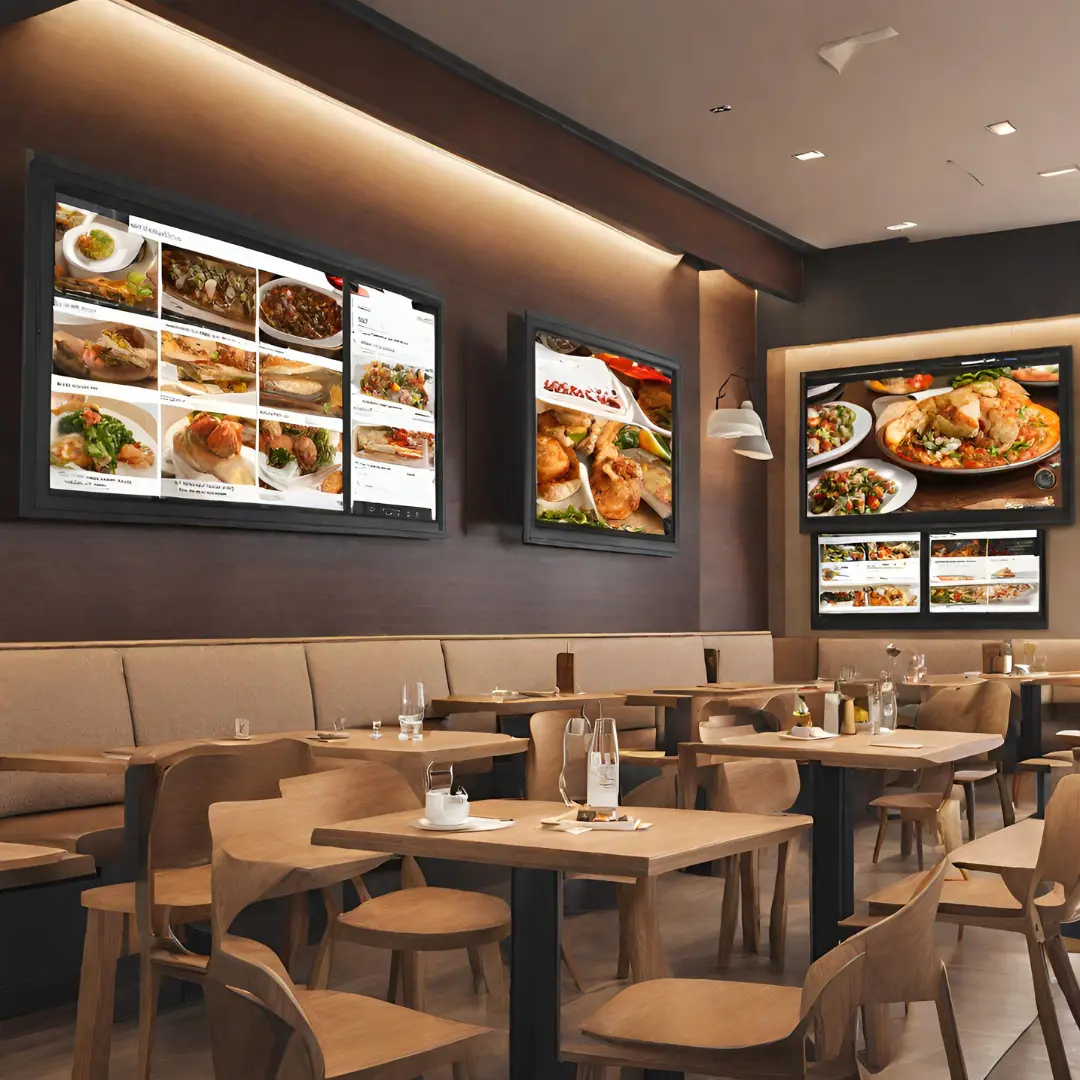
 Understanding the Roleof Digital Menu Boards in Modern Restaurants
Understanding the Roleof Digital Menu Boards in Modern Restaurants Recommended Digital Menu Board Sizes for Different Restaurant Setups
Recommended Digital Menu Board Sizes for Different Restaurant Setups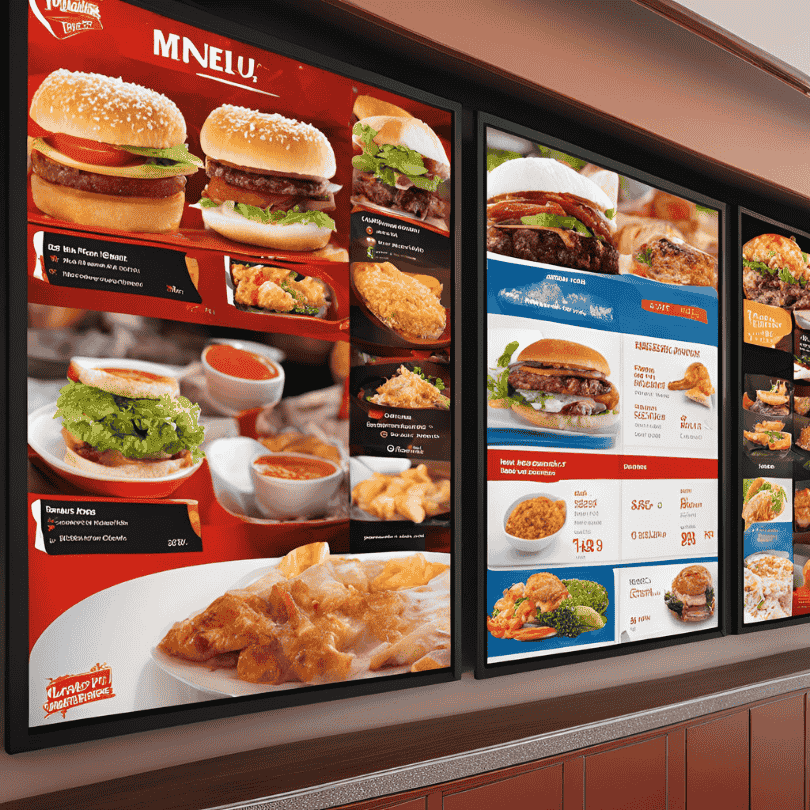 How does Digital Menu Board Software affect Screen Size Selection
How does Digital Menu Board Software affect Screen Size Selection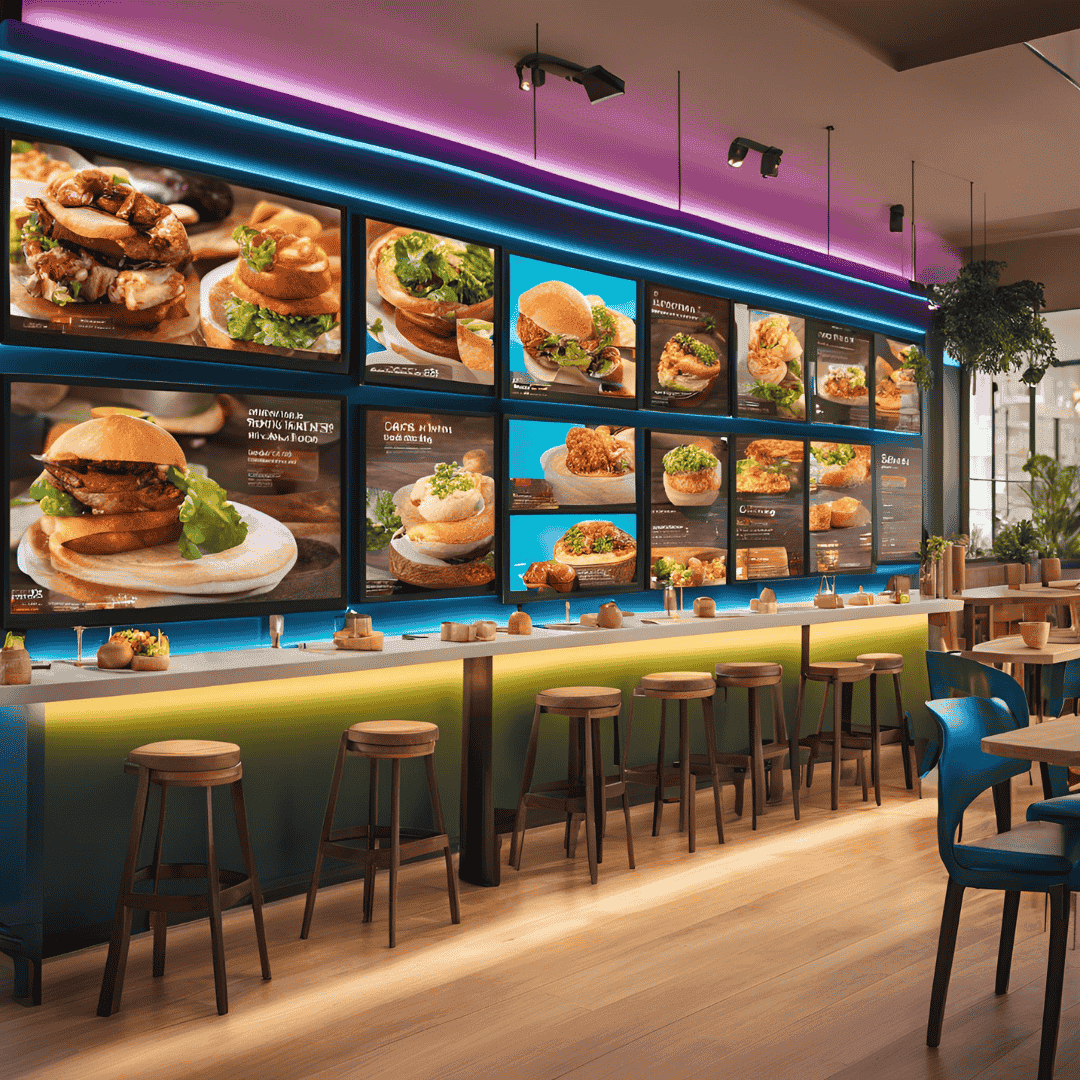
 Frequently Asked Questions (FAQs)
Frequently Asked Questions (FAQs)